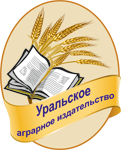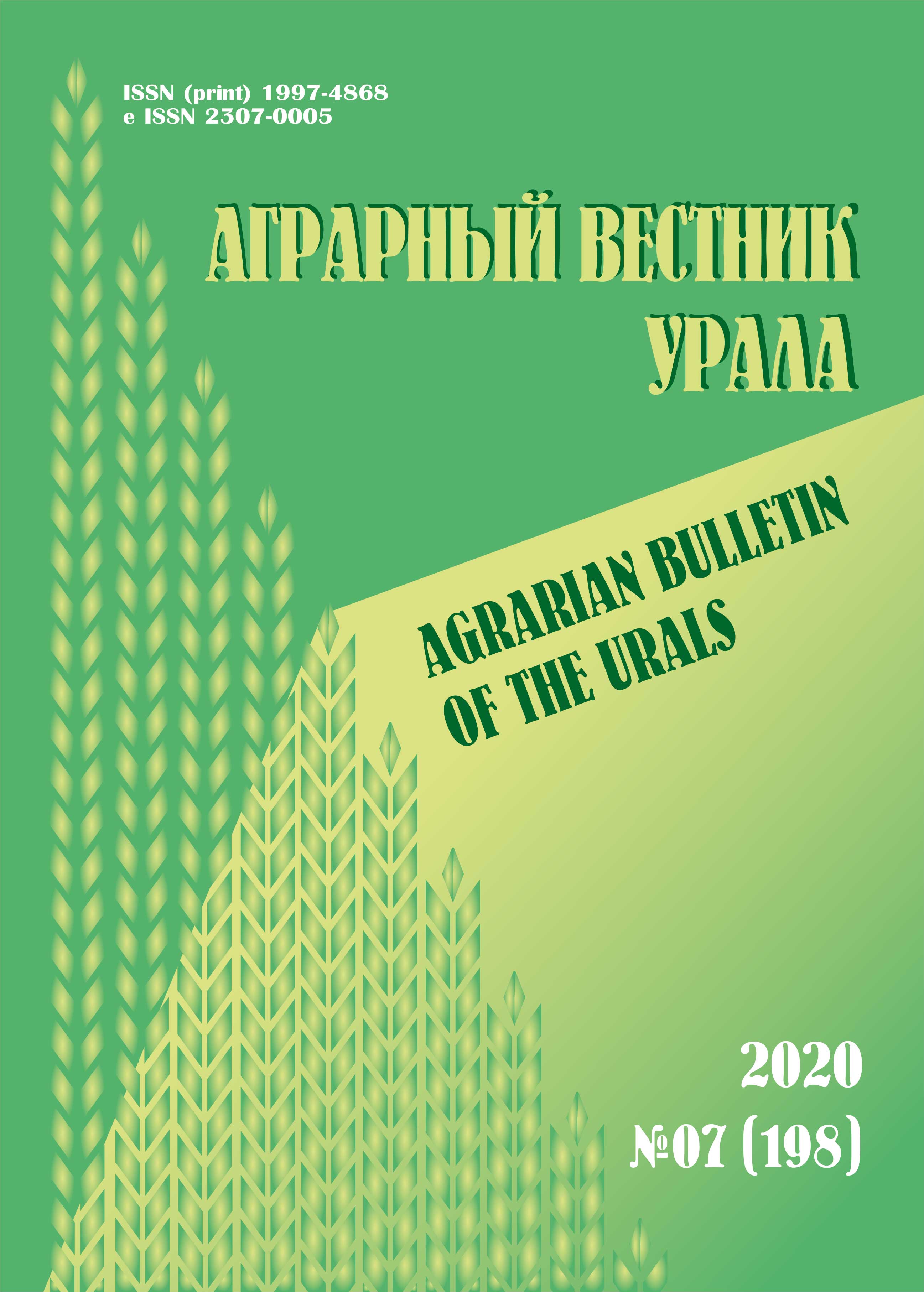Abstract. The purpose of the research is to study the collection and breeding material of tomatoes with a determinant bush type in open ground conditions, and to identify the best samples based on the results of the research on economically valuable traits for their further use in tomato breeding. Scientific novelty. Recent events in the country show the need to study and recommend domestic tomato varieties and hybrids in safe and risky farming zones. The article presents a brief description of new domestic tomato varieties with a short growing season. Samples of morphological and biometric indicators for the source material of tomato breeding were selected. Varieties with short interphase periods “shoots –flowering”, “flowering – ripening” were identified. On the basis of a comprehensive assessment of early maturity, economically valuable characteristics and tasting evaluation of fruits, promising varieties were noted for recommendation and implementation in the production of the lowland and foothill parts of Dagestan. Methods. Field and laboratory. The method for the study was 8 new semi-stamp cultivars of VNIISSOK selection. Descriptions of tomato plants were carried out taking into account morphological (stem height, number of shoots, number of leaves, number of brushes, number of ovaries and fruits), agrochemical and complex of economically valuable characteristics (total and early yield, marketability of fruits, fruit weight, dry matter, sugar, fruit tasting evaluation). Results. According to the maturation dates, the samples were divided into three groups: very early – Severyanka, Blagodatnyy, Magnat, Voskhod VNIISSOKa (97–100 days); early – Patris, Viking, Perst (102–105 days); middle-early – Sodruzhestvo, Fakel (111–114 days). According to the type of bush, we have identified 5 ordinary and semi-lamb samples with a height of no more than 78 cm. Two samples had a height of 50.53 cm (Patris, Perst) and an average fetal weight of 72 and 60 g. Three samples had a height of 70, 71, 72 cm (Voskhod VNIISSOKa, Blagodatnyy, Sodruzhestvo) and an average fetal weight of 107, 110, 130 g respectively. According to the output of gross output, the best indicators were of the following varieties: Blagodatnyy – 86.3 t/ha, Voskhod VNIISSOKa – 82.7 t/ha, Sodruzhestvo – 77.6 t/ha, Patris – 68.2 t/ha. The following grades had a high yield of marketable products: Voskhod VNIISSOKa, Patris – 92 %, Blagodatnyy – 91 %, Perst – 90 %.
tomato, varieties, morphology, ovary, early maturity, growing season, yield, fruit weight, tasting evaluation
1. Akhmedova P. M. Determinantnyye sorta tomata otechestvennoy selektsii v otkrytom grunte v usloviyakh Dagestana [Determinant tomato varieties of domestic selection in the open ground in Dagestan] // Bulletin of the Agrarian Science of Uzbekistan. 2022. No. 3 (3). Pp. 126-130. (In Russian.)
2. Burenin V. I., Artem’yeva A. M. Rol’ sorta pri importozameshchenii (na primere ovoshchnykh kul’tur) [The role of the variety in import substitution (on the example of vegetable crops)] // Vegetable crops of Russia. 2018. No. 2. Pp. 10-14. DOI:https://doi.org/10.18619/2072-9146-2018-2-10-14. (In Russian.) EDN: https://elibrary.ru/UQUBOA
3. Gulin A. V., Donskaya V. I., Katakayev N. Kh. Kriteriy otsenki kachestva plodov tomata po soderzhaniyu sakharov i kislot [Criteria for assessing the quality of tomato fruits by the content of sugars and acids] // News of FSVC. 2019. No. 2. Pp. 79-82. DOI:https://doi.org/10.18619/2658-4832-2019-2-79-82. (In Russian.) EDN: https://elibrary.ru/APVBKI
4. Grushanin A. I., Esaulova L. V., But N. N. Tekhnologiya vyrashchivaniya tomata v otkrytom grunte na Kubani: metodicheskie ukazaniya [The technology of growing tomatoes in the open ground in the Kuban: methodical instructions]. Krasnodar: EDVI, 2016. 35 p. (In Russian.)
5. Makovey M. D. Selektsiya tomata na ustoychivost’ k stressovym abioticheskim faktoram s ispol’zovaniyem gametnykh tekhnologiy [Selection of tomatoes for resistance to stress abiotic factors using newspaper technologies]. Kishinev, 2018. 473 p. (In Russian.)
6. Kondrat’yeva I. Yu., Engalychev M. R., L’vova A. Yu. Rannespelyye sorta tomata otkrytogo grunta dlya zon riskovannogo zemledeliya [Early-maturing varieties of open-ground tomatoes for risky farming zones] // Vegetable crops of Russia. 2020. No. 2. Pp. 58-61. DOI:https://doi.org/10.18619/2072-9146-2020-2-58-61. (In Russian.) EDN: https://elibrary.ru/QZDYUY
7. Makovey M. D. Vnutripopulyatsionnaya variabel’nost’ v potomstvakh F3 i F4 tomata, poluchennykh ot rekombinantov F2, ustoychivykh k vysokoy temperature po priznakam muzhskogo gametofita [Intrapopulation variability in F3 and F4 tomato offspring obtained from F2 recombinants resistant to high temperature by signs of male gametophyte] // Vegetable crops of Russia. 2019. No. 4. Pp. 37-43. (In Russian.) DOI: https://doi.org/10.18619/2072-9146-2019-4-37-43; EDN: https://elibrary.ru/MLPIEP
8. Kil’chevskiy A. V., Isakov A. V., Dobrod’kin M. M. Otsenka urozhaynosti gibridov i kombinatsionnoy sposobnosti iskhodnykh liniy tomata v plenochnykh teplitsakh [Evaluation of the yield of hybrids and the combinational ability of tomato baselines in film greenhouses] // Vestnik Belorusskoy gosudarstvennoy sel’skokhozyaystvennoy akademii. 2009. No. 3. Pp. 43-47. (In Beloruss.) EDN: https://elibrary.ru/ZOWGRF
9. Kozlova I. V. Sozdaniye novykh steril’nykh liniy tomata s tsennymi khozyaystvennymi priznakami v usloviyakh Yuga Rossii [Creation of new sterile tomato lines with valuable economic characteristics in the conditions of the South of Russia] // News of FSVC. 2020. No. 2. Pp. 43-48. (In Russian.)
10. Ognev V. V., Chernova T. V., Kostenko A. N., Barbaritskaya I. V. Sostoyaniye i perspektivnyye napravleniya selektsii tomata dlya otkrytogo grunta Rossii [The state and promising directions of tomato breeding for the open ground of Russia] // Potato and vegetables. 2021. No. 9. Pp. 33-36. DOI:https://doi.org/10.25630/PAV.2021.70.53.005. (In Russian.) EDN: https://elibrary.ru/IEFDXK
11. Metodika gosudarstvennogo sortoispytaniya sel’skokhozyaystvennykh kul’tur [Methodology of the state variety testing of agricultural crops] / Under the generaleditorship of M. A. Fedin. Moscow, 1985. 263 p. (In Russian.)
12. Litvinov S. S. Metodika polevogo opyta v ovoshchevodstve [Methods of field experience in vegetable growing]. Moscow: GNU Vserossiyskiy nauchno-issledovatel’skiy institut ovoshchevodstva, 2011. 648 p. (In Russian.)
13. Metodicheskiye ukazaniya po aprobatsii ovoshchnykh i bakhchevykh kul’tur [Guidelines for the approbation of vegetable and melon crops]. Moscow: Izd-vo FGBNU FNTsO, 2018. 224 p. (In Russian.)
14. Chernova T. V., Ognev V. V., Korsunov E. I. Tomaty na yuge Rossii [Tomatoes in the south of Russia] // Potato and vegetables. 2019. No. 11. Pp. 20-23. (In Russian.) DOI: https://doi.org/10.25630/PAV.2019.26.87.005; EDN: https://elibrary.ru/JEQFNA
15. Osei M. K., Prempeh R., Adjebeng-Danquah J. et al. Marker-Assisted Selection (MAS): A Fast-Track Tool in Tomato Breeding // Recent Advances in Tomato Breeding and Production (S. T. Nyaku and A. Danquah, Eds.). InTechOpen, 2018. DOI:https://doi.org/10.5772/intechopen.76007.
16. Skorina V. V., Solyanik T. L. Biokhimicheskiy sostav sortov tomata v otkrytom grunte [Biochemical composition of tomato varieties in the open ground] // Izvestiya FNTsO. 2019. № 1. Pp. 157-159. DOI:https://doi.org/10.18619/2658-4832-2019-1-157-159. (In Russian.) EDN: https://elibrary.ru/QOAWKU
17. Lapenko N. G., Godunova E. I., Dudchenko L. V., Kuzminov S. A., Kapustin A. S. Current state and ways to save the steppe ecosystems of Stavropol // Indo American Journal of Pharmaceutical Sciences. 2019. Vol. 6. No. 3. Pp. 6329-6336. DOI:https://doi.org/10.5281/zenodo.2604260. EDN: https://elibrary.ru/VWWHLG
18. Reshma T., Sarath P. S. Standardization of GrowingMedia for the Hydroponic Cultivation of Tomato // International Journal of Current Microbiology and Applied Sciences. 2017. No. 6 (7). Pp. 626-631.
19. Fentik D. A. Review on Genetics and Breeding of Tomato (Lycopersicon esculentum Mill.) // Advances in Crop Science and Technology. 2017. No. 5. Article number 306. DOI:https://doi.org/10.4172/2329-8863.1000306.









